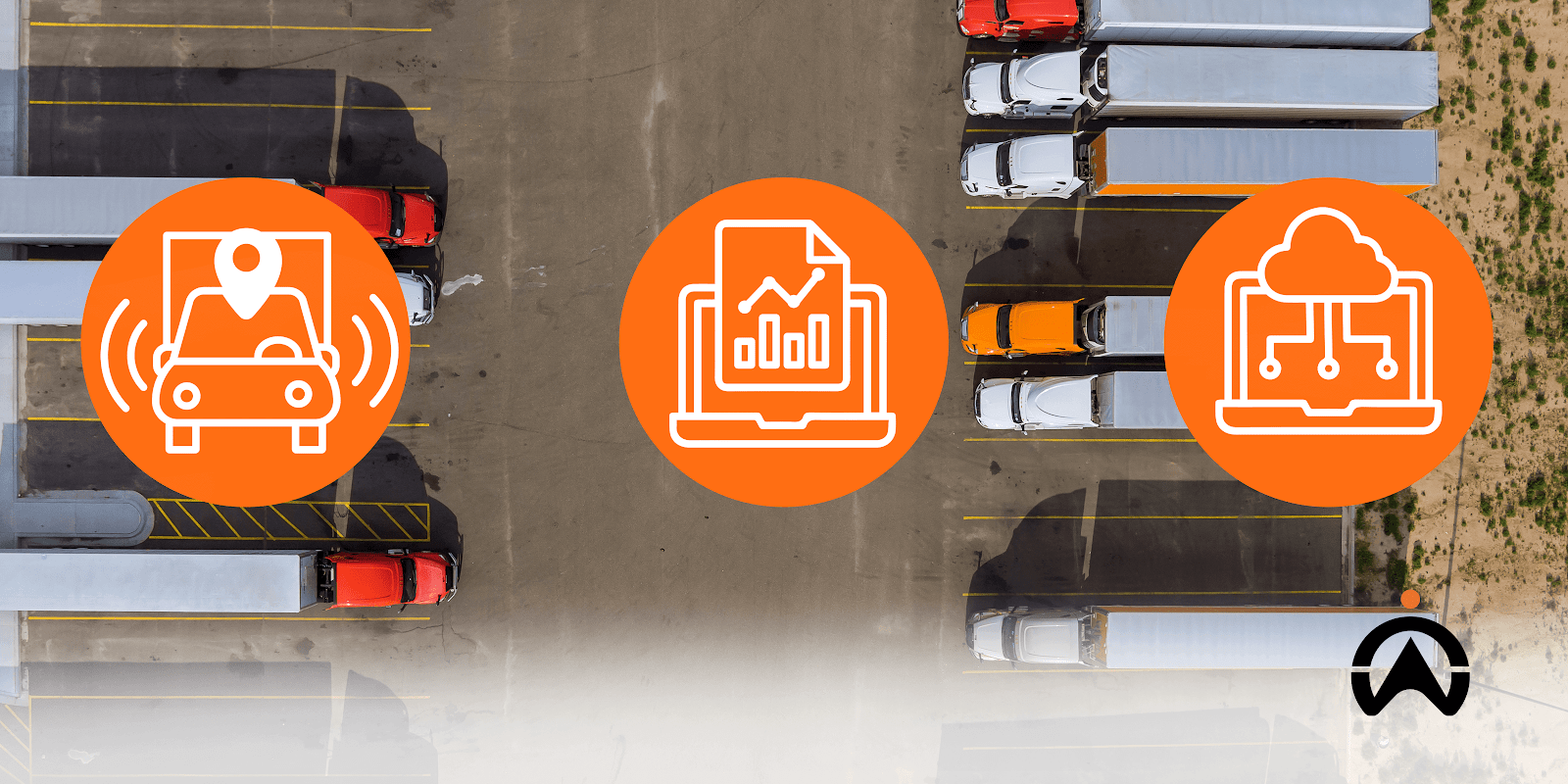Fleet management demands so much more than just vehicle tracking, requiring managers to have full visibility and oversee costs, compliance, and safety all at once.
One of the biggest challenges that fleets face is driver safety incidents, with most road fatalities being caused by preventable human errors like speeding, distraction, or failure to wear seatbelts. Risk mitigation and safer driving practices now make up critical parts of any successful fleet strategy, and it’s why a smart fleet strategy can take your business from good to great.
Through our comprehensive fleet strategy guide, you’ll learn how to build a safer and smarter fleet with the help of a blend of tools that incorporate technologies and data-driven insights. From telematics feedback to practical how-to guides, explore how Cartrack can turn your data into real action.
It doesn’t matter what time of the year it is, prepare for what lies ahead for your business every day. For fleet managers and business owners, today is the perfect time to outline a clear fleet strategy to achieve future goals.
A fleet strategy is a plan that outlines how you will manage your fleet of vehicles. This includes everything from choosing the right vehicles to maintaining them and tracking their performance.
All you need is a well-defined fleet strategy that aligns with your business objectives and will ultimately contribute to a safer and more productive work environment.
Let’s kick start with the basics.
As your business grows and expands, so does your need for a reliable, efficient, and high-performing fleet of vehicles. Before implementing high-tech fleet management solutions, you need to find a fleet management system that suits your business practices and industry.
At its core, fleet management is about overseeing, preserving, refining, and enhancing your assets. That means keeping track of the locations of your vehicles, how your drivers are behaving on the roads, and how your assets are performing overall. Here are some key tools that make this possible:

A clear and well-thought-out fleet strategy is the foundation to smoother fleet operations, serving as a roadmap that lays out all the tools and resources you need. With a strong fleet management strategy, you can focus your efforts towards improvements and business growth, meaning an uptick in productivity and ingenuity overall.
Develop a robust fleet strategy that aligns with your business’s objectives; here are 5 clear steps to help you get started:
Start every fleet management strategy with clear and measurable objectives, whether it's reducing fuel costs by 10% or enhancing driver safety through focused training programmes. These objectives may include trimming fuel expenses, refining driver behaviour, optimising asset utilisation, or minimising downtime.
Established goals guide decision-making and offer a benchmark for evaluating the success of your strategy so you can actually measure what’s working and what needs to be improved. If the goals from the current year were not achieved, you have the flexibility to either continue them or set new ones for the next year.
Assess your fleet based on factors such as mileage, maintenance records, and overall performance to determine if assets are still suitable for the upcoming year or if replacements are needed. This assessment builds an understanding of your fleet's strengths and weaknesses, helping you uncover areas for improvement and ultimately decide if an asset is due for upgrade or retirement.
Align your fleet with new business objectives by identifying specific needs for upcoming projects. Is your business expanding into more urban projects and areas? Evaluate if your current fleet meets the demands of city environments or if adjustments are needed.
Explore available fleet management technologies like GPS tracking, telematics systems, geofencing, and dashcams, then consider what works best according to your overall budget and business needs. With new fleet innovations emerging annually, the right ones can empower you to take control and stay on top of your operations.
Translate your fleet strategy into action by implementing the chosen processes and technology. Continuously monitor fleet performance - tracking metrics such as fuel consumption, vehicle uptime, and driver behaviour - and then use this data to refine your strategy and make necessary adjustments along the way. Regularly review this information to make enhance your business operations and improve your fleet strategy.
A fleet strategy doesn’t just rely on how well it’s run but also on whether it’s legally and compliance sound. South African businesses are being put under immense pressure to ensure that they’re adhering to the rules of the road and complying with drivers’ working hours, carbon emissions, and licences.
With Cartrack, you can stay on top of all things compliance and avoid falling victim to penalties through features like licence validity checks, automated reminders, and files/contract folders for soft copies of important documents.
As the transportation industry continues to evolve, fleet management is at the forefront of innovation. By embracing technologies and adopting new strategies, fleet managers can rapidly improve fleet efficiency, boost long-term performance overall business success.
Let's explore 4 major trends that are shaping the future of transportation:
As previously mentioned, businesses are experiencing increased pressure when it comes to their ecological footprints, which see a number of companies naturally progressing towards electrification and fuel efficiency.
Environmental, social, and governance (ESG) goals are at the forefront, and Cartrack can help you achieve those goals. Adopt sustainable practices with features that include route optimisation and fuel monitoring.

These emerging trends are only as good as the tools you implement to harness them. Cartrack, the industry leader in telematics and vehicle tracking, offers a range of fleet management solutions that can help businesses of all shapes and sizes strengthen their fleet strategy today!
Here’s how Cartrack can turn your strategy into results:
Whether you’re looking to improve safety or slash those rising costs, Cartrack has everything you need to make those business changes a reality. From easy and seamless task management to detailed and comprehensive data analytics, we’ll ensure you see tangible fleet management success.
Are you eager to see your fleet operating at its full potential?
Contact Cartrack’s team and take control of your operations.
Q: How can telematics improve my fleet’s performance and strategy?
A: Telematics systems collect and interpret data such as driver behaviour and fuel usage. With this type of data, businesses can identify inefficiencies, minimise risks, and bring about changes that improve overall fleet productivity and safety.
Q: How often should I review my fleet strategy?
A: Ideally, your strategy should be reviewed at least once a year, with data being monitored continuously. These kinds of regular check-ins allow you to adjust your fleet strategy based on the data presented, which can include performance trends or even industry changes like fuel prices or compliance matters.
Q: Is fleet management strategy only applicable to large businesses?
A: No, fleet strategy benefits businesses and companies of all sizes. Even smaller fleets can cut costs, improve processes, and stay compliant – with a good fleet management company allowing scalable solutions if the company ultimately continues to grow.
Q: How can I coordinate my fleet strategy with my business goals?
A: Your fleet strategy should reflect and support whatever you want your business to achieve, whether that’s bringing down operational costs, improving service, or staying on top of compliance. Always start by looking over potential future projects and business growth, and then tailor your tools to match.

Build a smarter, tech-forward fleet with our expert guide. Learn how to build a high-performing strategy, adopt technologies, and boost safety and efficiency with Cartrack.